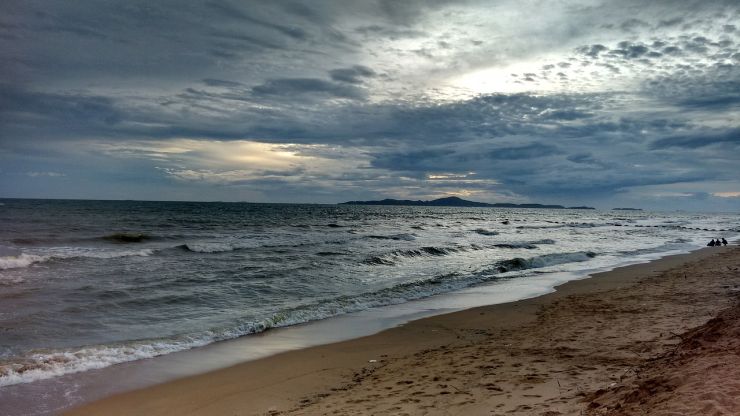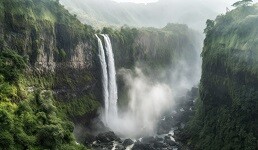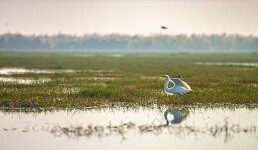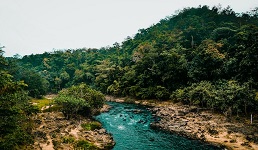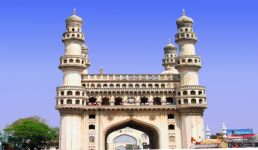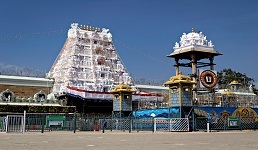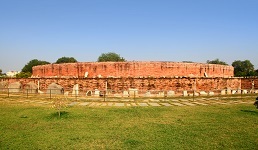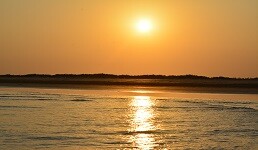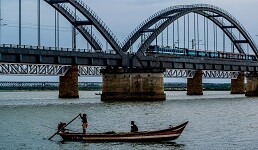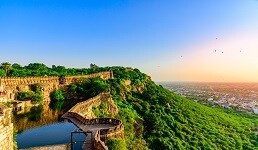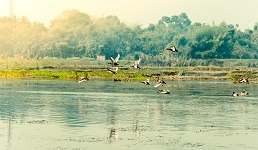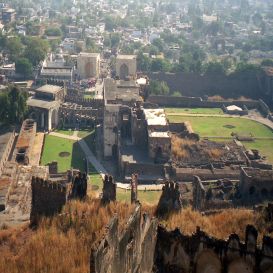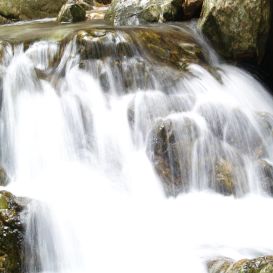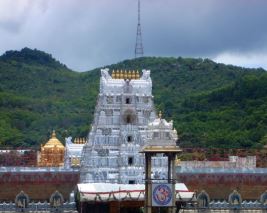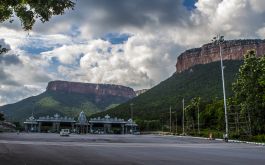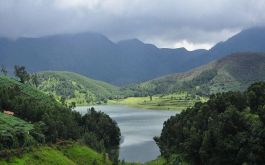Mypadu Beach is one of the main highlights of Andhra Pradesh tourism. A large number of tourists visit this beach for its scenic views and relaxing atmosphere. It is one of the most popular beaches in the state, where tourists can engage with nature, enjoy a variety of fun activities, check out nearby attractions and learn about the local culture and traditions. Mypadu Beach is maintained by the Andhra Pradesh Tourism Development Corporation (APTDC). It also works as a popular weekend getaway for people looking to spend some quality time amidst serene nature. It is among the top holiday destinations where individuals can go for a short trip with friends and family within Andhra Pradesh.
In order to establish Mypadu Beach as a prominent tourist destination in Andhra Pradesh, the state tourism board has set up various resorts and opportunities for recreational activities at the location. This means that besides having a bath in the sea or taking a peaceful stroll along the shoreline, individuals can go for horse rides, boating, jet skiing, etc. Mypadu Beach is also one of the best places in the state where individuals can get enchanting sunrise and sunset views.
Location of Mypadu Beach
This well-known beach is situated in a small village called Mypadu within the district of Nellore, Andhra Pradesh. It is located on the eastern coast of India, along the beautiful Bay of Bengal. The Mypadu Beach distance from Nellore city is roughly 25 kilometres. Besides that, the beach lies about 192 km from Kadapa, 154 km from Tirupati and 144 km from Ongole. The popular tourist attraction, Penchalakona Waterfalls, is around 103 kilometres to the west of Mypadu Beach. The precise address of the beach is Mypadu, SPSR Nellore district, Andhra Pradesh State, India.
Language spoken in Mypadu Beach
The Mypadu Beach is part of Andhra Pradesh’s Nellore district. According to the reports, the majority of the locals in that region use Telugu and Urdu as their first language. Individuals visiting Mypadu Beach during their Andhra Pradesh vacation may also come across people who are fluent in other languages, such as English, Hindi, etc. However, the best option for tourists is to hire a local guide if they are not familiar with any of the local languages. Even though English tends to work for the most part, especially at resorts, hotels, restaurants, etc., having a Telugu guide along will make your sightseeing experience much smoother.
Known for
Mypadu Beach is one of the most visited tourist destinations in the Nellore district. The site is mainly famous for its;
Beauty: The natural beauty and soothing atmosphere of the place are some of the main factors that draw the attention of tourists. In addition, the sunset and sunrise views from the beach create the perfect romantic setting for couples. Mypadu Beach is also one of the best places in the region where you can take wonderful pictures for your holiday album.
Availability of recreational activities: Mypadu Beach is a fantastic destination for both casual tourists and thrillseekers. There are tons of fun activities at the beach that individuals can participate in, including bathing in the sea, horse riding on the sandy beach, going on boat rides, and so on. It is also one of the best places in the state where individuals can go for affordable jet skiing adventures.
Seafood: The presence of food stalls at Mypadu Beach adds to the whole beachside experience. They mainly serve fresh seafood prepared with a mix of local spices at reasonable prices. Individuals can just sit back and enjoy their delicious meal while soaking in the scenic beauty of the place.
Quality accommodation: The availability of quality accommodations at decent prices makes Mypadu Beach in Andhra Pradesh a popular destination among tourists. The Mypadu Beach hotels and resorts are well-maintained and come with all the necessary amenities, including television, room service, parking, food, etc. A lot of tourists visit the site to experience a relaxing stay at the famous Mypadu beach resort.
Type of place
Mypadu Beach is a pristine beach located in the Mypadu village of the SPSR Nellore district. It is maintained by the APTDC, who have been working on developing the place as a major tourist attraction in Andhra Pradesh by adding resorts, a scope for recreational activities and other services. It is a great place to relax and rejuvenate during the weekends or enjoy a fun short trip with family and friends. Mypadu Beach is also a prominent location for water sports and adventures, including boating and jet skiing.
How to get to Mypadu Beach?
Mypadu Beach is quite well-connected and features accessible transport options. Here’s how tourists can reach this famous destination on their Andhra Pradesh trip:
By air
Mypadu is a small village and doesn’t have its own airport service. The closest airport to Mypadu Beach is Tirupati International Airport, located about 16 kilometres from the centre of Tirupati city. It features frequent flights from reputed carriers and creates a solid connection to other major cities in India, including Vijayawada, Vizag, Chennai, Kolkata, etc. Individuals planning their Mypadu Beach visit can schedule their flight to Tirupati and then cover the remaining 145 kilometres by road.
By rail
Besides flight, another great option individuals can consider for reaching Mypadu Beach is via train. The nearest major railhead to the beach is Nellore Railway Station, which is about 2 kilometres from the Nellore city centre. Individuals can easily get frequent long-distance trains scheduled to Nellore from major cities in Andhra Pradesh as well as the rest of the country. From the Nellore Railway Station, the distance to Mypadu Beach by road is 22 kilometres, which individuals can cover in a bus, taxi or rental car.
By road
As Mypadu lies close to Nellore, it enjoys great road connectivity with other parts of Andhra Pradesh. Tourists making their way to Mypadu Beach from Nellore can opt for a taxi or bus service, both of which are quite popular options. If you drive on SH 57 from Nellore, you can reach Mypadu Beach within 50-60 minutes. Tourists can also make their journey to the beach by road from Ongole or Tirupati, which lies at a distance of 144 km and 155 km, respectively.
Interesting Facts about Mypadu Beach
Here are some interesting facts about Mypadu Beach in Andhra Pradesh that tourists may find interesting:
Mypadu Beach is one of the key tourist attractions in the SPSR Nellore district. It has massively influenced tourism in the region, especially in Mypadu village. The state tourism board has also taken various initiatives to promote the beach as a prominent tourist destination in Andhra Pradesh.
It is one of the best places in Andhra Pradesh where tourists can enjoy boating and jet skiing in the mesmerising sea at affordable prices.
The Lord Shiva Temple, also known as the Mypadu Beach Temple, is located just beside the beach. It attracts tons of devotees, who visit the temple for pujas and then go for a holy dip in the nearby sea.
Besides tourism, the beach provides significant fishing opportunities to the local fishermen. Also, tourists can buy fresh fish from the Mypadu Beach Fish Market or try prepared seafood from the local stalls by the beachside.
The Mypadu Haritha Beach Resort, maintained by APTDC, was established to promote tourism in the region. The rooms and services offered at the resort are of high quality and will help enhance your stay in Mypadu at affordable rates. Other services available in the region include eateries, parking, local shops, etc., all close to the beachside.
Why is Mypadu Beach recommended?
Mypadu Beach is mainly recommended for individuals who are looking for a calm, beachside experience near the Nellore district, Andhra Pradesh. The beautiful scenic views and the relaxing atmospheric tone of the region have attracted a lot of tourists for weekend stays. Apart from its beauty, this beachside getaway comes with options for fun recreational activities, beachside seafood stalls, nearby parking facilities, etc. Mypadu is an off-beat location, which is why many prefer its beachside over other crowded beaches in the state, like Rishikonda Beach, Yarada Beach, Rama Krishna Beach, etc.
Mypadu is also a massive religious hub with various prominent temples and shrines spread across the region. There are many well-known religious sites in and near Mypadu Beach that attract tourists, like Lord Shiva Temple, Sri Venkateswara Swamy Temple, Sri Rama Temple, etc. Individuals planning their stay in the region can easily go with the APTDC-maintained Haritha Resorts Mypadu. It is located just by the beachside, and the rooms at Mypadu Beach Resort are very clean and offered at affordable prices. It is considered the best choice when it comes to hotels in Mypadu Beach.
Due to its close proximity to other major tourist attractions in the region, Mypadu Beach has become a standard addition to the sightseeing route for visitors. The beach is recommended to individuals visiting sites like Kotha Koduru Beach, Krishnapatnam Beach, RanganathaSwamy Temple, etc.
Operating hours
The timing for Mypadu Beach in Andhra Pradesh is between 04:30 AM to 07:30 PM. However, the operational hours for the resort, temples, and other nearby attractions may vary. Even though Mypadu Beach is perfect for a visit around the year, the best time is considered between October and February due to the pleasant weather.
Chart for Mypadu Beach
|
Name
|
Operating hours
|
Ticket Price
|
|
Mypadu Beach
|
04:30 AM - 7:30 PM
|
No entry fee
|
|
Jet skiing and boating activities
|
Around beach hours
|
INR 250/- for skiing and INR 100/- for boating
|
|
Lord Shiva Temple, Mypadu Beach
|
9 AM - 6 PM
|
N/A
|





